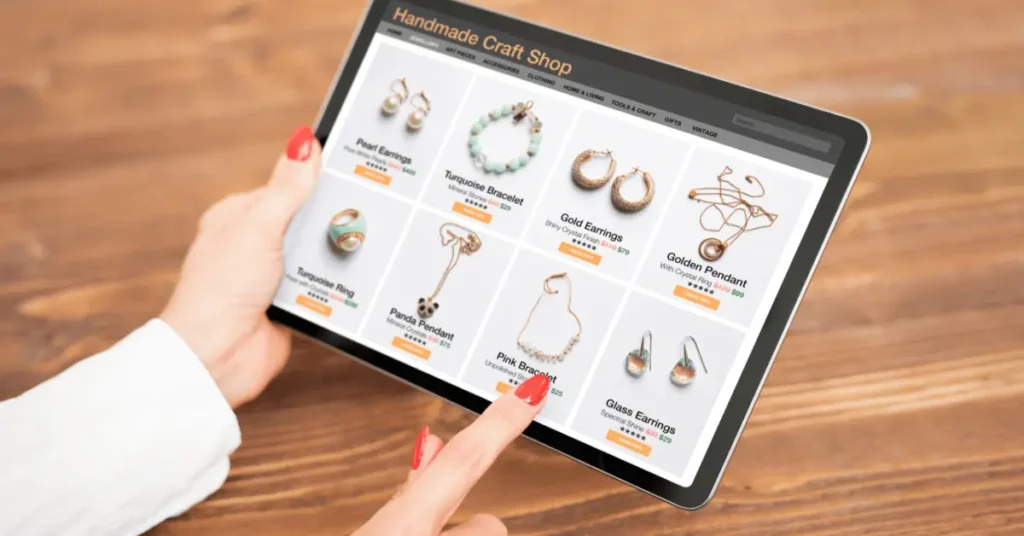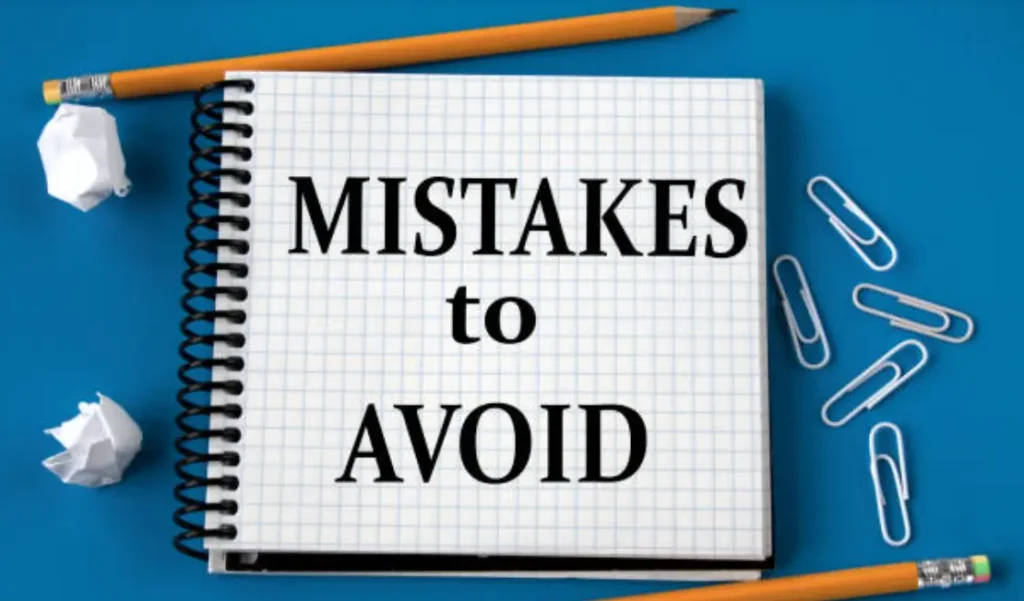SEO for Etsy is your secret weapon. It’s how buyers discover your unique handmade, vintage, or craft supply products. In a marketplace with millions of sellers, you need a clear strategy to stand out. Think of it: Etsy hosts over 95 million active buyers. Getting even a small piece of that audience can transform your business. This guide will show you how to optimize your shop and listings, turning browsers into enthusiastic customers.
Understanding Etsy’s Search Algorithm: Beyond Keywords

Etsy’s search algorithm helps buyers find exactly what they want. It’s smart, constantly learning, and blends several factors. Your success comes from knowing these factors and working with them.
The Core Principles of Etsy Search
Etsy’s system balances relevance, listing quality, and buyer experience. According to Etsy’s official seller handbook, Etsy emphasizes transparency and authenticity for all sellers. This means disclosing shop members, using genuine product photos, and providing detailed information for vintage items. All listings must fit Etsy’s categories—handmade, vintage, or craft supplies—and you should avoid prohibited items or non-sales-related listings. Ultimately, good seller conduct, including honoring commitments and prompt communication, is crucial for maintaining a successful shop and adhering to Etsy’s policies.
- Relevancy: This is about how well your listing matches a buyer’s search. If someone types “handmade ceramic mug,” Etsy wants to show them exactly that. Using precise words helps here.
- Listing Quality Score: Etsy measures how appealing your listing is. Do people click it? Do they favor it? Most importantly, do they buy? A higher score means Etsy shows your item more often. We’ll explore this more later.
- Recency: New listings and renewed listings get a small, temporary boost. Etsy uses this to see how buyers react to your item. This helps them gather data on how well it converts.
- Personalized Search: Etsy learns what each buyer likes. If someone often buys “boho minimalist decor,” Etsy will show them more items in that style. This means your ideal customer sees your items more easily.
- Customer & Shop Score: Your overall shop performance matters. This includes your review rating, how quickly you respond to messages, and if you offer clear shop policies. Shops with excellent service rank better.
The Rise of AI-Powered Search & Semantic Understanding
Etsy’s search is getting smarter. It now uses AI to understand what buyers mean, not just the exact words they type. This is “semantic search.” Imagine a buyer searching for a “cozy blanket for movie night.” They aren’t looking for “cozy blanket” and “movie night” as separate keywords. They want a specific feeling and use. Etsy’s AI tries to understand this deeper intent.
According to a Retail Dive article, Etsy AI personalization. published on May 1, 2025, Etsy is significantly increasing its use of AI to enhance personalization for buyers and sellers, despite recent declines in gross merchandise sales and active buyers. The company is deploying AI across various touchpoints, including push notifications, emails, and especially personalized homepages, which have shown nearly double the engagement compared to non-personalized versions.
Etsy’s approach combines human curation with AI, a method they call “algotorial curation.” Human experts identify trends and curate initial collections, which AI then expands significantly, ensuring aesthetic cohesion and variety. This system leverages buyer behavior data (views, purchases) to tailor recommendations.
Beyond personalization, Etsy is also using AI for tasks like generating marketing copy, creating alt text for images, summarizing product reviews, improving delivery date estimations, and enhancing accessibility and SEO. They are also experimenting with AI agents and integrating with third-party AI platforms like OpenAI’s Operator and Microsoft’s Copilot to further streamline shopping experiences. While recognizing the risks, Etsy views AI as crucial for driving engagement, improving discovery, and differentiating itself in the e-commerce landscape.
How Etsy’s AI Interprets Queries: Etsy’s system analyzes the full meaning of a search phrase. It looks for relationships between words. It knows “throw” might relate to “blanket,” and “snuggle” implies “cozy.” It processes natural language, like how we talk.
Actionable Strategies for Semantic SEO:
- Use synonyms naturally: Instead of just “wooden cutting board,” consider using phrases like “rustic serving platter” or “kitchen cheese board.”
- Describe with context: Think about how your product is used. If you sell a “wedding invitation,” describe the “joy of planning a special day” or “setting the tone for your celebration.”
- Answer unspoken questions: Your description can cover details a buyer might ponder. For a piece of art, mention “fits perfectly in a gallery wall arrangement.”
- Embrace descriptive phrases: Instead of just “earrings,” try “delicate silver drop earrings” or “bohemian statement earrings.” This helps Etsy connect your item to more complex searches.
In-Depth Keyword Research for Etsy: Finding Your Buyers

Keywords remain fundamental. They are the initial connection between what a buyer types and what your product offers. Focus on the words your customers use. Long-tail keywords (phrases of three or more words) are particularly powerful. They bring fewer searches but attract buyers with specific intent, meaning higher conversion rates.
Essential Etsy Keyword Research Tools
You have many tools to help you find the right words.
- Etsy Search Bar Suggestions: This is your free starting point. Type a general term into Etsy’s search bar. Watch the autocomplete suggestions. These are real searches by real people. For “handmade candles,” Etsy might suggest “soy wax candles,” “personalized candles,” or “luxury scented candles.”
- Paid Tools: These offer deeper insights.
- Marmalead: Known for its “engagement” and “competition” scores. It helps you find keywords that are both searched for and have less competition.
- eRank: Offers a wide range of reports, including keyword ideas, trend alerts, and competitor analysis. It has both free and paid plans.
- Alura: Provides keyword data, listing quality scores, and product research to help you discover profitable niches.
- EtsyHunt: Another strong option for product and keyword research, focusing on sales data and trend analysis.
- These tools help you analyze what works in your niche.
- Google Keyword Planner: Useful for understanding external search volume. While not Etsy-specific, it can show you broader trends and terms.
- Pinterest Search: Pinterest is a visual search engine. People often look for product ideas here. Search for your product type and see what related terms or themes appear in suggested searches.
Keyword Brainstorming Techniques
- Think like your customer: What words would you use if you were looking for your product?
- Analyze competitor listings: Look at the titles and tags of successful shops selling similar items. What words do they use?
- Explore trends: Use Google Trends or Etsy’s trend reports to find popular items and themes.
- Consider seasonal searches: Plan for holidays or seasonal events. For example, “Christmas ornaments” or “summer beach tote.”
On-Page SEO for Etsy Listings: Optimizing Every Element
Once you have your keywords, apply them to your listings. Every part of your listing influences how Etsy’s algorithm sees your product.
Product Titles: Your Most Critical Real Estate
Your title is the first thing buyers and Etsy’s algorithm see.
- Strategic keyword placement: Put your most important keywords at the beginning. Etsy prioritizes these.
- Balance keywords with readability: Your title should be clear and appealing to humans, not just robots.
- Include key attributes: If you sell a “small blue ceramic vase,” include “small,” “blue,” and “ceramic.”
- Character limits: Keep your title concise. Etsy generally shows the first few words prominently.
Tags: Maximizing Your 13 Opportunities
Etsy allows 13 tags per listing. Use all of them!
- Multi-word phrases: Instead of “silver,” use “sterling silver necklace.” These are long-tail tags.
- Avoid repetition: Don’t use the same word in multiple tags or in your title. This wastes space.
- Variety is key: Include tags for materials, styles, occasions, and target recipients. For a baby blanket, use “baby shower gift,” “newborn blanket,” or “soft baby throw.”
- Relevance: All tags must directly relate to your product.
Descriptions: Informative, Engaging, and SEO-Friendly
Descriptions tell your product’s story.
- Write for buyers and the algorithm: Naturally weave in keywords and related terms.
- Clear formatting: Use bullet points for easy reading of features and benefits.
- Answer questions: Include dimensions, materials, care instructions, and processing times. This reduces buyer questions and improves conversion.
- Highlight benefits: Focus on what your product does for the buyer, not just what it is. “This mug brings a smile to your morning coffee” sells better than “ceramic mug.”
Categories & Attributes: Precision for Discoverability
These are like built-in tags that significantly boost your visibility.
- Accurate categories: Choose the most specific categories and subcategories. This helps Etsy place your item in the right section.
- Listing Quality Score Impact: Filling out all relevant attributes is crucial. Attributes are specific details like “color,” “material,” “occasion,” “recipient,” “style,” and “theme.” These act as keywords, helping Etsy understand your product deeply. Etsy gives a higher quality score to listings with complete attributes. For example, if you sell a “wedding gift,” selecting the “Wedding” occasion attribute is vital.
High-Quality Visuals: Images & Videos
Images are your first impression and drive clicks.
- Impact on clicks and conversions: Stunning photos make people stop scrolling and click your listing. Higher click-through rates tell Etsy your listing is appealing, which can improve your search ranking.
- Professional photos: Use bright, well-lit photos showing your product from multiple angles.
- Listing videos: Etsy prioritizes listings with videos. Shoppers who watch videos are significantly more likely to purchase. Videos increase engagement. Aim for 15-30 second videos. Show the product in use. For example, a video of a handmade journal being written in, or a piece of jewelry being worn.
- Thumbnail image: Make your first image eye-catching. It needs to stand out in search results.
Enhancing Your Etsy Shop’s Overall SEO
SEO isn’t just about individual listings; your entire shop contributes to your visibility.
Shop Title & Announcement
- Shop title: Use relevant keywords that describe your shop’s overall focus.
- Announcement: Promote current sales, new arrivals, or important shop news.
About Section & Shop Policies
- About section: Share your story, your process, and what makes your shop unique. This builds a connection with buyers.
- Shop policies: Clearly state your shipping, return, and exchange policies. Transparency builds trust. Etsy values shops with clear policies, which contributes to the overall shop score.
Customer Experience: The Human Element of SEO
Excellent customer service directly impacts your search ranking. Etsy wants buyers to have great experiences. Harnessing your Etsy shop’s visibility on the platform is crucial, but don’t forget the power of a broad online presence! Just as you optimize for Etsy’s internal search, building strong connections from other websites can significantly boost your overall authority online. If you’re curious about how these external signals work to improve your ranking, explore our detailed guide on Link Building For Local SEO: 8 Ways to Rank Higher in Google SERP to discover strategies that can help your business be found beyond Etsy.
- Prompt responses: Reply to messages quickly. Aim for within 24 hours. Etsy tracks response times.
- Excellent service: Be helpful and resolve issues calmly. Positive interactions lead to positive reviews.
- Reviews: Encourage positive reviews. Respond to all reviews, both good and bad, showing you care. Etsy’s algorithm favors shops with high review ratings. Shops with a 5-star average rating often appear higher in search results.
- Shop Star Seller badge: Achieving this badge indicates excellent customer service, further boosting your shop’s reputation and visibility.
Shipping Strategy
- Free shipping: Listings offering free shipping to the U.S. often get priority in Etsy search results. Consider building shipping costs into your product price.
- Transparent shipping profiles: Use Etsy’s calculated shipping to provide accurate costs.
- Realistic processing times: Be honest about how long it takes to prepare and ship. Timely shipping contributes to your overall shop score.
Advanced Etsy SEO Strategies & Future Possibilities

Now, let’s explore ways to go beyond the basics and future-proof your Etsy presence.
Bringing in External Traffic for an SEO Boost
Did you know Etsy rewards shops that bring in their traffic? About half of Etsy’s traffic comes from outside the platform. This means you can significantly influence your Etsy SEO by attracting buyers from other places.
Why External Traffic Matters: When you direct traffic from outside Etsy to your listings, Etsy sees this as a sign of a popular and desirable shop. This can improve your standing in Etsy’s algorithm.
Strategic Social Media Marketing:
- Pinterest: This platform is a visual search engine. Create beautiful pins linking directly to your Etsy listings. Use strong keywords in your pin descriptions.
- Instagram & TikTok: Use engaging photos and videos to showcase your products. Tell stories about your creative process. Link to your Etsy shop in your bio or through shopping tags.
- Facebook Groups: Participate in niche-specific groups related to your products. Share your listings where appropriate, offering value, not just sales pitches.
- Beyond social media:
- Building an Email List: Collect emails from interested buyers and send them newsletters with new products, sales, and links to your Etsy shop. This creates a direct connection.
- Blogging/Content Marketing: If you love writing, start a blog about your craft. Write articles like “5 Unique Ways to Style a Handmade Quilt” and link to your relevant Etsy listings.
- Collaborations: Partner with other Etsy sellers or small business influencers for cross-promotion. This expands your reach to new audiences.
- Tracking your efforts: Use UTM parameters in your links (a small code you add to a URL) to track where your external traffic comes from within Etsy Stats. This helps you refine your off-Etsy marketing strategies.
Using Etsy Ads Strategically to Inform SEO
Etsy Ads are not just for immediate sales; they can be a powerful learning tool for your organic Etsy SEO.
How Ads Help SEO:
- Keyword validation: Run small ad campaigns using keywords you’re considering for organic SEO. Analyze which keywords generate clicks and conversions. If an ad keyword performs well, it’s a strong candidate for your organic titles and tags.
- Testing new listings: Use ads to give new listings an initial push. This helps them gather early data on clicks and conversions, which can quickly improve their “Listing Quality Score.”
- Competitive categories: In crowded product areas, a short ad campaign can provide visibility you might not get organically at first. This initial exposure can then help your organic ranking over time.
Continual Optimization & Adaptation
Etsy’s marketplace is dynamic. What worked last year might not be as effective today. Think of your shop as a living thing that needs constant care.
- Monitor Etsy Stats: Regularly check your Etsy Stats. See which listings get the most views, clicks, and sales. Identify the search terms people use to find your products. This data is gold for refining your keywords.
- A/B Testing: Don’t be afraid to experiment. Try slightly different titles, first photos, or even tag combinations on similar listings. See which version performs better.
- Stay Informed: Follow Etsy’s official Seller Handbook and announcements. Participate in seller forums. Changes in the algorithm happen, and being aware helps you adapt quickly.
- Proactive Adjustments: If a listing’s performance dips, revisit its SEO. Are the keywords still relevant? Are the photos strong?
- The “Freshness” Factor: Etsy gives new listings a temporary boost. Consider refreshing older listings or creating new ones regularly to keep your shop active in the search results.
Niche SEO Considerations
Different product types have unique SEO needs.
- Vintage Sellers: Focus on specific eras (“mid-century modern”), unique characteristics (“Art Deco”), and condition. “Collectible” or “rare” could be strong keywords.
- Handmade Jewelry/Art: Emphasize materials (“sterling silver,” “resin”), techniques (“hand-painted,” “macrame”), and style (“boho chic,” “minimalist”).
- Digital Downloads: Be precise about file types (“printable PDF,” “SVG cut file”), software compatibility (“Procreate brushes”), and specific uses (“wedding planner template”).
- Custom/Personalized Items: Highlight the customization options (“engraved name,” “custom portrait from photo”) and the recipient (“personalized gift for dad”).
Common Etsy SEO Mistakes to Avoid

Even seasoned sellers make mistakes. Avoid these pitfalls:
- Keyword Stuffing: Don’t cram too many keywords into your titles or descriptions. It looks spammy to buyers and can hurt your ranking.
- Generic Tags: Using single, broad words like “jewelry” is not enough. Be specific: “dainty gold necklace.”
- Incomplete Listings: Not filling out all categories and attributes is a missed opportunity for visibility.
- Ignoring Analytics: Your Etsy Stats are full of clues. Don’t overlook them.
- Poor Quality Photos: Blurry or unappealing photos stop buyers in their tracks, regardless of your SEO.
- Inconsistent Inventory: Listings that are frequently out of stock can negatively impact your shop’s overall performance.
Conclusion
Mastering Etsy SEO is a continuous journey. By understanding Etsy’s evolving algorithm, conducting smart keyword research, optimizing every part of your listings, and providing an outstanding customer experience, you put your shop in the best position for success. The Etsy marketplace offers an incredible opportunity for creators and curators. By applying these strategies, you empower your products to be discovered by the right buyers, leading to more views, more sales, and a thriving Etsy business. Start applying these tips today and watch your shop shine!




